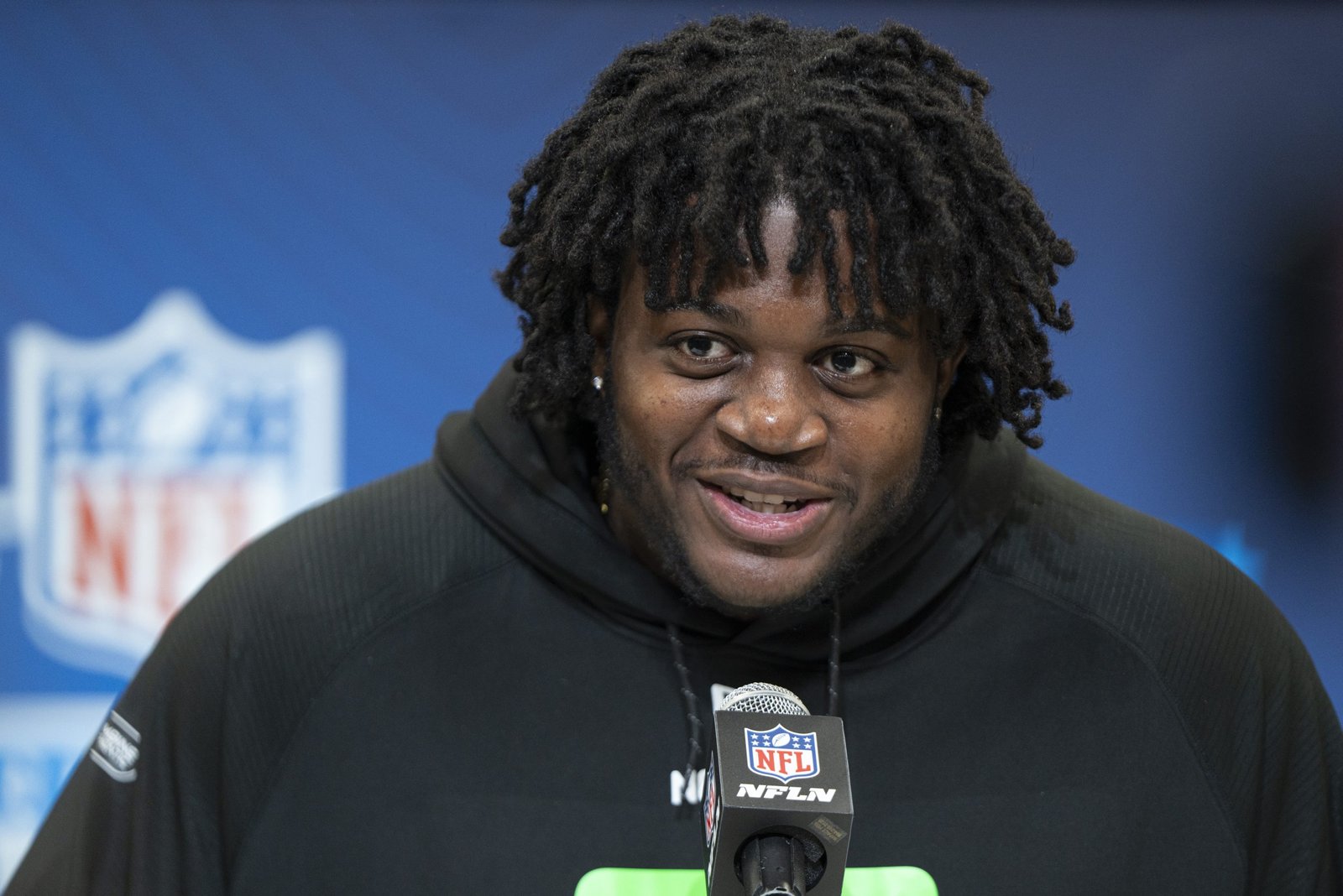As the New York Jets enter a new era under Darren Mougey and Aaron Glenn, their first-ever draft class signals a more conservative approach compared to the bold, unpredictable moves made under former GM Joe Douglas. Rather than swinging for the fences with high-risk, high-reward picks, Mougey and Glenn made two relatively safe but crucial selections: first-round right tackle Armand Membou and second-round tight end Mason Taylor.
The Membou Pick: A Safe Bet for the Offensive Line
For much of the lead-up to the 2025 NFL Draft, it seemed like the Jets were torn between two top prospects: Armand Membou and tight end Tyler Warren, with many speculating that one of them would be the pick at No. 7 overall. Eventually, the Jets chose Membou, a decision that was likely less controversial within the organization than some had expected. The move was safe, solid, and exactly what the team needed to address their offensive line concerns.
Membou, who was considered one of the top offensive tackle prospects in the draft, was a perfect fit to help solidify the right side of the Jets’ line. His 4.91-second 40-yard dash at 330 pounds impressed scouts, showcasing his athleticism for his size. With a career that saw him allow only three sacks (one of which he disputes), Membou is expected to contribute immediately. His presence on the right side, paired with the Jets’ 2023 first-round pick Olu Fashanu on the left, could create a formidable bookend tandem for whichever quarterback takes the reins in the future—most likely Justin Fields, but that remains to be seen.
The Pre-Draft Smoke and Gaslighting: The Kelvin Banks Jr. Drama
While the Jets’ selection of Membou seemed straightforward, there was a lot of pre-draft buzz about Kelvin Banks Jr., the Texas offensive tackle who went at No. 9 overall to the New Orleans Saints. According to ESPN’s Jeremy Fowler, the Jets were heavily linked to Banks in the days leading up to the draft, with rumors swirling that they might lean in a different direction from Membou.
However, the Jets managed to gaslight the rest of the league, creating a smokescreen that had teams thinking they might take Banks at No. 7. This strategic move kept other teams on edge, leading to some uncertainty around their actual intentions. When the pick was made, it wasn’t a major surprise that the Jets settled on Membou after all. While Banks could have been a solid pick, the Jets would have had to move him to the right tackle position, which might have disrupted his development and potentially been a less seamless transition than they’d hoped for.
The Decision to Pass on Chukwuma Okorafor
In making the move for Membou, the Jets ultimately decided that Chukwuma Okorafor—a current right tackle who may not have been the long-term answer for the Jets—wasn’t a compelling enough reason to pass on a prospect with Membou’s pedigree and talent. The upside of forming a reliable offensive line with Membou and Fashanu outweighed the potential short-term stability Okorafor could provide.
A High-Floor, High-Impact Pick
Membou’s selection represents a low-risk, high-reward situation for the Jets. With the offensive line being a long-standing concern for the team, adding a player who can immediately contribute and offer stability is crucial. His ability to start right away and provide competence in a position that has plagued the Jets for years will be vital for the success of the offense, whether Fields or another quarterback is under center.
While Kelvin Banks would have been a solid pick, and Tyler Warren might have made sense as another weapon for the offense, Membou is the kind of safe pick that offers immediate returns and helps solidify one of the most important areas of the team—protection for the quarterback. This pick addresses a major need, gives the Jets a high-floor player, and allows them to continue building their offensive line with a solid foundation.
